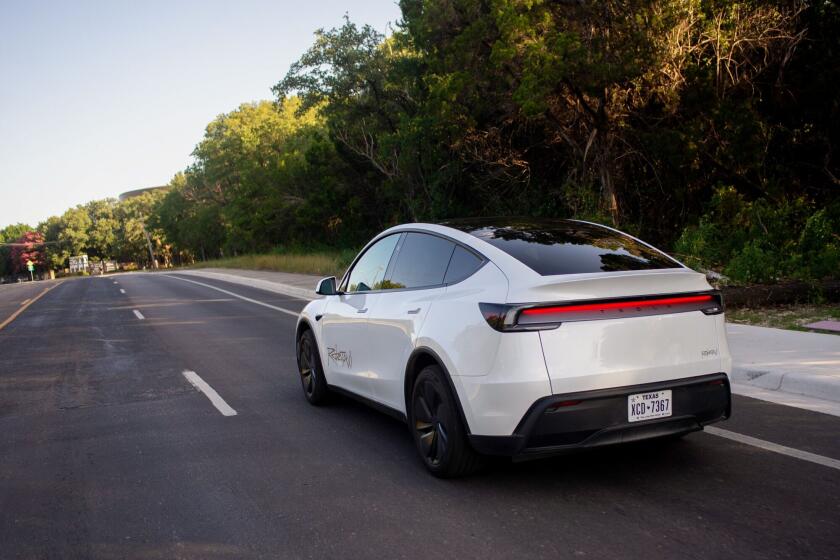57 Freeway extension is ‘feasible’
- Share via
Extending the 57 Freeway down the Santa Ana River to connect with the San Diego Freeway in Fountain Valley is “potentially feasible” but would cost an estimated $2 billion, according to a study released Monday.
The concept was first proposed decades ago to help alleviate congestion and complete an eight-mile extension of the 57 Freeway that has gone unfinished since the early 1960s.
The proposed four-lane section of freeway would be elevated above the river.
The route would cut through parts of Anaheim, Orange, Santa Ana, Fountain Valley and Costa Mesa.
Past proposals have focused on routing a six-lane freeway down the riverbed. Its width would cause the highway to encroach on neighborhoods and shopping centers in Santa Ana.
Such a project was estimated to cost $1.3 billion in the mid-1980s and has been met with unrelenting political opposition.
But Orange County Transportation Authority board members said they had an obligation to study the concept because it’s part of the county’s transportation master plan, Supervisor Chris Norby said.
“We found we can put a four-lane parkway without expanding the footprint that’s needed,” said Norby, who on Monday called the proposed route the Santa Ana River Parkway.
The study identifies no funding for the route. The extension was not included among projects under Measure M, a half-cent local sales tax for transportation improvements.
One funding option is building the extension as a toll way, connecting it to the San Joaquin Hills toll road in Costa Mesa, Norby said.
Representatives of the Army Corps of Engineers and the county flood control division participated in the study’s technical discussions but said the route needs further analysis.
Any proposal involving a route above the river will involve the corps, which has major flood-control jurisdiction over the river.
“We have a responsibility with the Clean Water Act to ensure such a proposal is environmentally sound,” said Jay Field, a corps spokesman.
An extension would complete a “missing link” in the county’s north-south transportation system, the study said. The extension is projected to accommodate 150,000 vehicles a day.
The study was narrow in scope, and found that “using a route for the extension down the river is possible but certainly there are other challenges, such as the impacts to the environment, the neighboring communities and the cost,” said Joel Zlotkin, an OCTA spokesman.
Mark Rosen, a Garden Grove city councilman who chairs OCTA’s regional planning committee, said he was against the plan. “This will pass through people’s backyards in Santa Ana and it would be destructive of some of the neighborhoods,” Rosen said. “And at that cost, there are more things that you can do with $2 billion without ripping up neighborhoods.”
The committee approved the study, which goes to the board for discussion in November.
State Sen. Louis Correa (D-Santa Ana), a former county supervisor, has opposed an extension, saying that OCTA should first be weighing health effects from smog and other pollutants, especially for vulnerable Santa Ana residents.
Santa Ana officials agreed, saying the transportation benefits would be outweighed by the negative environmental impacts effects and reduced the quality of life for city residents.
“Our position has been to oppose it because any kind of an elevated system down that river bed has to go high enough to go over existing bridges,” Santa Ana Public Works Director Jim Ross said.
“We would end up with a huge structure that would look down on homes and neighborhoods. It doesn’t sound too attractive to us,” Ross said.
--
More to Read
Sign up for Essential California
The most important California stories and recommendations in your inbox every morning.
You may occasionally receive promotional content from the Los Angeles Times.













